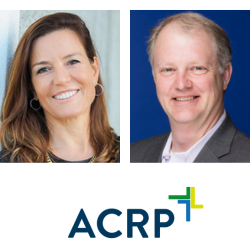Just when it seemed as if decentralized clinical trials (DCTs) were in danger of becoming “yesterday’s news” in light of all the attention being paid lately to applications of artificial intelligence in the clinical research enterprise, the tables have turned, if perhaps only briefly, thanks to the release of finalized new U.S. Food and Drug Administration (FDA) regulatory guidance on DCTs.
In addition to keeping its DCT Resource Center up to date, ACRP invited two seasoned commentators on regulatory and compliance trends in the industry to weigh in on the guidance. In a forthcoming article for the October issue of the Association’s Clinical Researcher journal, one of them, Pamela Tenaerts, MD, Chief Scientific Officer for Medable, notes that, in the guidance, “the FDA has emphasized one of the greatest advantages of a decentralized model: Flexibility, in that trial sponsors can pick and choose decentralized elements [so that trials] are designed to be fit-for-purpose, fit for the patient population.”
In her article, Tenaerts goes on to highlight how the guidance approaches data oversight, principal investigator oversight, clinical trial visits, informed consent, safety monitoring, and electronic systems in relation to the design and conduct of DCTs.
“Historically, the clinical research industry has referred to a decentralized model as a DCT or hybrid trial,” Tenaerts also notes. “Now, the FDA is reframing it to simply be what it is—a clinical trial with decentralized elements, such as telehealth visits, electronic informed consent, and digital health technologies (i.e., wearable devices). …Now with emerging data on DCT impacts and the FDA’s re-characterization, we can confidently return to trial design fundamentals but with the option to leverage modern technologies á la carte style if—and when—they benefit the trial.”
Also commenting on the guidance is David Vulcano, LCSW, MBA, CIP, RAC, FACRP, Vice President, Clinical Research Compliance and Integrity, HCA Healthcare, who writes:
On September 18, 2024, the FDA published its much-anticipated final guidance on “Conducting Clinical Trials with Decentralized Elements.” This guidance is a step forward in many ways, offering several key improvements to the original draft published for public comment more than a year ago. However, a few critical elements remain either inadequately addressed or overly burdensome without accompanying justification.
The elements of decentralization focused on by FDA will be of little surprise to most close observers of how the evolution of DCTs has progressed thus far. Items such as telehealth visits, digital health technologies for remote patient monitoring, direct shipment of investigational product to trial participant, etc., have been in place for decades and were put to accelerated use during the COVID-19 pandemic.
Although some of these items have accompanying statements in the new guidance that present challenges on execution (e.g., “Investigators should take measures to ensure the privacy of in-home and telehealth visits”), most are in line with what would be expected, and FDA did respond to many calls to eliminate seemingly unnecessary and overly prescriptive documentation that would burden the research professionals.
One major concern that remained despite public pushback was the FDA’s desire to have many DCT elements more prescriptively hardwired in the written protocol instead of at the discretion of stakeholders closer to the situation, such as site staff and trial participants. Specifically, the guidance states that the protocol should make clear things like:
- which visits will be conducted at traditional clinical trial sites versus remotely or left to participants’ choice;
- when a telehealth visit with a trial participant is appropriate versus being seen in person;
- how local care will be provided for adverse events requiring urgent or in-person attention;
- when investigators can delegate trial-related activities to appropriate local healthcare providers (HCPs); and
- when routine safety monitoring involving laboratory testing and imaging may be performed using local clinical laboratory facilities close to trial participants.
While there can be legitimate safety reasons for such prescriptiveness, even today’s best-intentioned protocols are already challenged to be implemented in real-world settings where unforeseen circumstances cause administrative protocol deviations that have little to no impact on science and safety. The more restrictive and manipulative the protocol is written, the less patients and sites are able and/or willing to participate. With the guidance requiring such hardwiring, it is our hope that those who write protocols will specifically call out participant flexibility and professional judgment to the maximum extent possible. Otherwise, we move away from patient centricity and all the other benefits that decentralizing trials is intended to bring.
Another major concern is the classification of HCPs. Fortunately, the draft requirement for these individuals to be listed on a “task log” received much backlash in public comments and was removed from the final guidance. Unfortunately, the final guidance maintained the ballyhooed ambiguities over whether these individuals would be considered sub-investigators.
Even after 40 years of guidance on Form FDA 1572 (Statement of Investigator) for drug studies and on the Investigational Device Exemption list of investigators for medical device studies, there is still a lack of clarity on whether certain individuals (e.g., research coordinators) should be categorized as sub-investigators as opposed to trial support staff. This has led to much overreporting paperwork (e.g., resume gathering, conflict of interest disclosures) and costs (e.g., over-training) out of fear that the FDA might want them to be listed.
The subjective criteria in the final decentralized trial guidance to differentiate an HCP from a sub-investigator extends this anxiety to the many HCPs who could assist in a clinical trial; specifically, the criteria on if they “provide trial-related services that are part of routine clinical practice” and/or require “a detailed knowledge of the protocol or [investigational product].”
For example, is the HCP deviating from “routine care” if their standard practice is to let patients choose the arm to take blood pressure from, but the protocol requires the same arm each time? Or instructing them to perform the EKG before a blood draw when they usually consider the sequencing irrelevant? Is it “detailed knowledge of the protocol” to instruct them not to provide a certain medication restricted by the protocol for a concurrent medical condition?
Without further guidance or otherwise alleviating the fear of regulatory repercussions for a difference of opinion on this ambiguity, there will continue to be pressure to add all HCPs as sub-investigators “just in case the FDA desires it.” This extends this anxiety and work from just a few individuals today (e.g., research coordinators) to tens or even hundreds of HCPs that might help in trials of increasing scale and complexity. Such uncertainty will continue to disincentivize HCPs from assisting and research site staff from facilitating their use.
As a reminder, according to the FDA, the published guidance only represents the agency’s current thinking and provides recommendations. FDA states that the guidance is not binding, and companies can choose to follow alternative approaches if they satisfy the requirements of the applicable statutes and regulations.
Always be sure to read the source. The final guidance document is available at https://www.fda.gov/media/167696/download.
Edited by Gary Cramer




